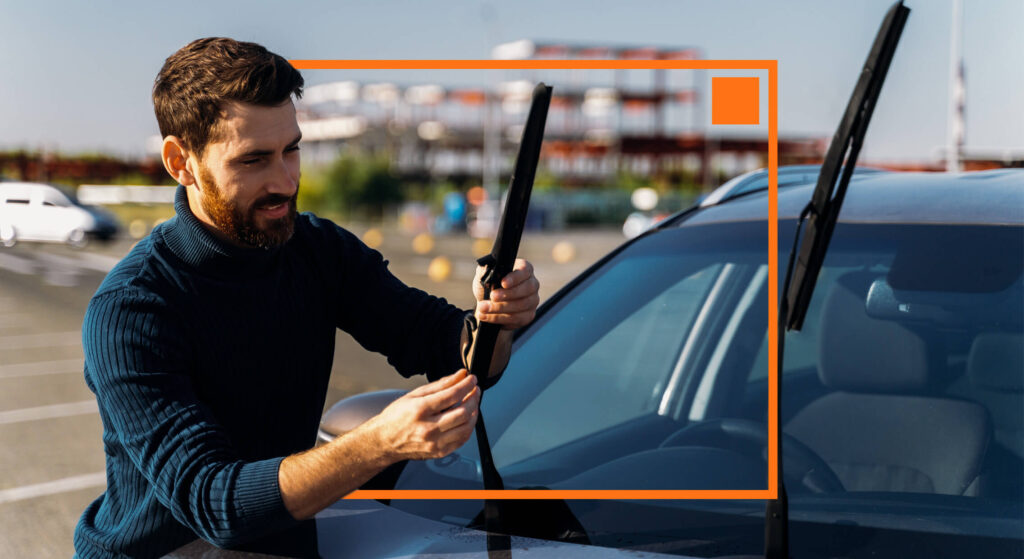Remove & Replace: How To Change Windshield Wipers and Blades
Apr 15, 2024

As an Amazon Associate, Modded gets commissions for purchases made through links in this post.
Wiper blades might seem indestructible, but they don’t last forever. Even if you take good care of them, months of wiping snow, rain, dirt and dead bugs off your windshield will eventually render them useless. The end result? Sticky blades that make a smudgy mess and block your line of sight. Some can even make horrible screeching sounds when the rubber begins to peel off the blade. You need to change your windshield wipers now and again.
Even your windshield wipers themselves — this includes the arm — can bend and break after months or years of use. Luckily, removing and changing your windshield wipers and blades is simple and affordable. In fact, you could easily buy replacements and save yourself some money just doing the job yourself.
Different Types of Wiper Clips
Before you start removing the wipers, you need to look at the blade mount. There are six different types of blade mounts, depending on the make and model of your vehicle. Hook-style clips are simple j-shaped hooks that latch to the wiper with the tab. Side-lock and top-lock models are self-explanatory. Bayonet-style clips are a single straight bar of steel with a hole for the wiper tab to click into. Slim-top clips share a similar design. Pinch-tabs hold tightly to the wiper blade.
Most wipers you purchase in auto parts stores will come with various adaptors that work for any or all of these clip types. Some makes and models may have a specific kind of wiper clip you can only get from the dealership, but in most cases, you won’t have to go further than your local AutoZone or Advance Auto Parts to get some new wiper blades.

How Long Do Wiper Blades Last?
The lifespan of windshield wiper blades, or squeegees, is anywhere from six to 12 months, depending on where you live and how often you drive your car. When they need replacing, order a set of blades online. Most blades deteriorate at the same rate, regardless of how much you pay, so look for a cheap set that’ll fit your wipers.
Ask an auto parts store for the proper fit if you’re having trouble choosing the right size. A mechanic will also be able to tell you whether or not the blades need replacing if you’re having any doubts.
How to Remove and Install Windshield Wiper Blades
However, in most cases, replacing the entire wiper blade will be the easiest option. It’s surprisingly easy to get wiper blades off. When you find the best fit, follow the steps below to remove your old blades and install the new ones:
- Raise the wipers so they hang above the windshield without touching the glass.
- Use a flathead screwdriver to depress the clip underneath the wiper and remove the blade. If there is no clip, look for a hook-slot or pin-type connector and either press or pull it to release the blades.
- Next, install the new blade. This process will once again depend on which fastener or connector you have. However, most models should simply slide right onto the wiper arm.
- Pull up on the blade to lock it into place. You should hear a small click. Give it a few gentle tugs to ensure it’s secure before laying the wipers back down on your windshield.
- Last but not least, refill your windshield wiper fluid so your brand-new blades can go to town on that grimey glass. If your vehicle has a rear wiper, you may have to add more liquid to its reservoir, too. Check both containers every week or so to ensure you don’t run out.
If you can’t find replacement blades, you may be able to replace the rubber insert instead. These inserts are the only part of the blade that comes into contact with the windshield. Replacing the inserts is easy. They come in a pack of two and are one-size-fits-all, so all you need to do is remove the old inserts, place the new ones and cut them down to size. It’s quick, easy and often more cost-effective than replacing the whole wiper assembly.

How to Change Your Windshield Wipers’ Arms
When your wiper blades do need replacing, inspect the windshield wiper arms as well. Are they showing signs of wear and tear? Take your car for a quick test drive. If the wipers sputter, make a squeaking or grinding noise, leave streaks or barely touch the windshield, you may have to shell out a little more cash for entirely new windshield wipers.
Don’t worry! They’re not that much more expensive than the blades. In fact, you might save money in the long run by simply purchasing them together.
When you’re ready to complete the installation, follow these steps:
- First, lift the wipers and place a piece of cardboard under them to protect the glass.
- Remove bolt-on wipers by unscrewing the nut that attaches them to the drive arm. If you have clip on wipers, simply release the clip. Spring-loaded wipers require you to press a pin to release them from the arm.
- Pull the wiper arms from their post and set them aside.
- Use a small wire brush to scrub off any rust and debris from threaded posts and apply a drop of oil to the threads.
- Align the new wipers with the attachment point on each post. Slide, tap, press or pull it into place.
- If you have an older vehicle, you may have to secure the wiper arm to the base, which you can find under the hood. Use a socket wrench to twist and tighten the nut back onto the drive post before replacing the cover.
Driving with Confidence and a Clean Windshield
You’ve just spent all this time learning how to change your windshield wiper blades or perhaps even the wipers themselves. The last thing you want now is to get in the car, turn on your wipers and have them go flying off onto the road. Even if you’re driving at slow speeds, you could put yourself and other drivers in danger in this worst-case scenario.
That’s why you should test your windshield wipers and blades before hitting the open road. If it’s raining, sit idle and turn them on to make sure everything works as it should. Otherwise, you can pour some water on your windshield or turn on the sprinkler to give everything a quick test run. Once you get the green light, you can put pedal to the metal and drive with confidence — and a clear view.
Originally posted 2/23/2022 – Updated 4/15/2024






